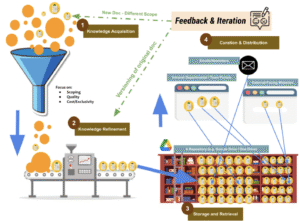Teachers and principals don’t need more reports; they need answers in the same week a problem appears. That’s why I obsess over PowerSchool data visualization that moves from extraction to insight quickly—so leadership teams can pivot fast on attendance, enrollment, and performance. My approach starts with the question, not the tool: What decision will this chart change—today?
Learn How I Do It here: https://jayraguda.com/jayraguda/leveraging-powerschool-data-for-real-time-visualization-how-i-help-charter-schools-get-insights-quickly/
From SIS to signals—fast.
I scope the minimum viable dataset first (e.g., daily attendance deltas, schedule changes, risk flags), then build a lightweight PowerSchool plugin to extract just that. A small service (Cloud Run works well) schedules the pulls, lands them in BigQuery, and stamps a reliable “as-of” for auditability. The point isn’t a perfect data warehouse; it’s a trustworthy pipe.
Stage, shape, show.
In the warehouse, I stage views aligned to real user questions—“Which students slipped below 90% attendance this week?”—so dashboards in Looker Studio or Tableau are snappy and filterable. Because the logic sits upstream, principals see consistent definitions across schools, and analysts don’t babysit brittle spreadsheets.
Bold move: PowerSchool data visualization as workflow.
Dashboards aren’t endpoints; they’re launchpads. I wire alerts (email/Slack) for threshold breaches, embed quick actions (contact logs, meeting notes), and close the loop with weekly PLC reviews. When teams treat the dashboard as the start of a conversation—not the finish—you get behavior change, not just pretty charts.
Quality and privacy, by design.
Every pipeline I build includes row-level access, PII minimization, and standardized definitions (e.g., what counts as “present” or “on-track”). This guards against dueling dashboards and keeps compliance clean during audits.
Bottom line.
If you want adoption, make the first correct answer the easiest to find. Start with one high-value metric, prove the time savings, and scale from there. With tight pipes and clear definitions, PowerSchool data visualization becomes a habit across your network—not a one-off project.
Let’s get to Work!
Need help designing a lean SIS→warehouse→dashboard pipeline or measuring time saved for school leaders? I consult with K–12 networks on SIS/LMS interoperability, analytics, and change management. Let’s build the system your teams will actually use. https://consulting.jayraguda.com
Love these insights? Subscribe to Dr Jay’s Weekly K–12 Systems Spotlight on LinkedIn: https://www.linkedin.com/build-relation/newsletter-follow?entityUrn=7336430863393411075




